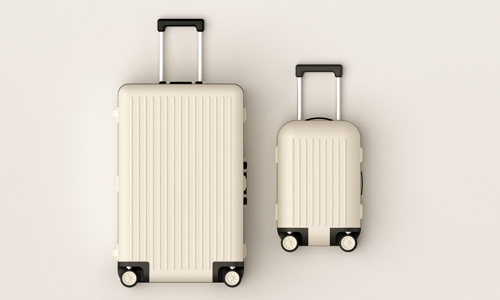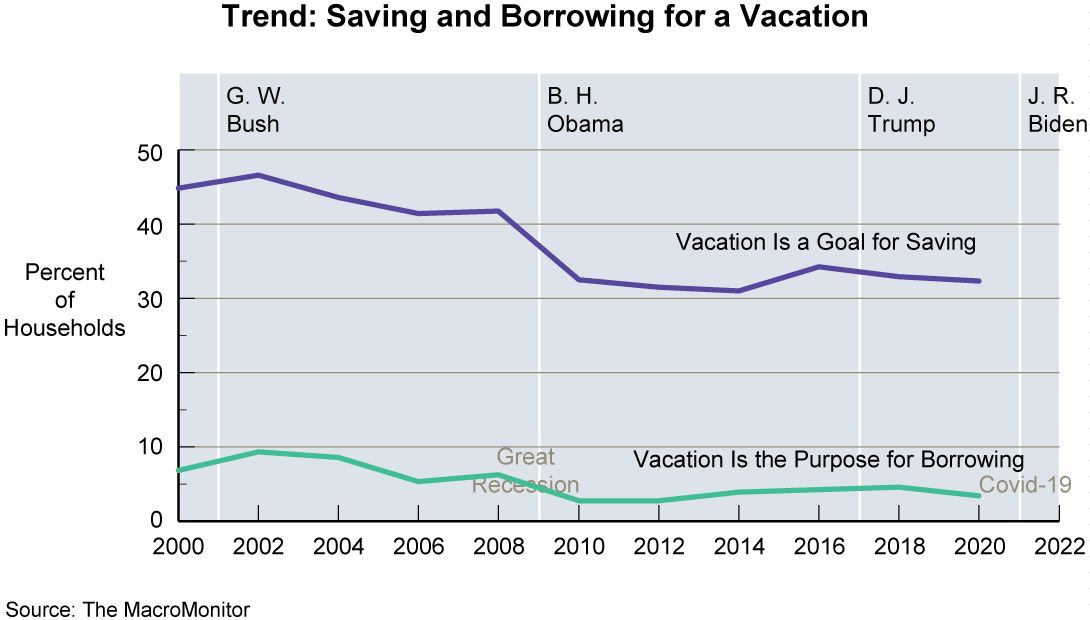Trends Newsletter August 2021
If you would like more information about this topic, please contact us.
Many Households Are Ready to Take a Vacation!

The Covid-induced economic plunge has affected the travel industry greatly. As a result, a desired and well-earned vacation this year will likely be expensive. The travel industry has shifted from offering great deals to travelers to return, to higher pandemic-fueled prices and now inflation. A few reasons for increases are:
- Fuel prices are up (and rising). Not only are oil production and refining capabilities down, but Government and activist scrutiny of high CO2-emission producers are intensifying because of climate concerns.
- Rental cars are difficult to find and expensive to rent. Rental-car companies sold off most of their fleets during the pandemic and the current semiconductor shortage means that auto manufacturers are supplying dealers (sales that produce higher profits margins) before supplying fleet buyers. (Note: even a basic vehicle today contains about 30 chips.)
- Prices of overnight accommodations in most areas are pricier than they were pre-pandemic. Hospitality providers laid off most housekeeping and ancillary staff when the pandemic took hold and guests evaporated. Many (Black and Hispanic) women who filled housekeeping positions remain home a.) without reliable, affordable childcare, or b.) until they can find a better-paying job.
The number of vacation days being left on the table continues to increase, according to the US Travel Association. The number of vacation hours employers give as a benefit is increasing; at the same time, the number of vacation days employees use steadily declines. For example, in 2018 768 million vacation days were left unused—a 9% increase from 2017. In 2020, when the pandemic was at its peak, fewer than half of employers changed their vacation policies (most companies do not carry unused vacation time into the next year). With the increase of work time (about 1 hour a day), "workcations" (take your laptop with you) became popular. This year, "staycations" (vacation trips within 200 miles of residence) are popular. Proximity, and the yen for wide-open spaces, mean that reservations at state and national parks are hard to come by.

For households with financial guardrails, vacation funding comes from saving or borrowing. Stay-at-home work and government-stimulus checks have given some households (HHs) the ability to save more. The MacroMonitor reports that in the past two years, 32% of US HHs have saved money for a vacation; a steady decline from 47% in 1998. Almost one-third (30%) of "vacation-saving" HHs have between $1,000 and $2,500 at the end of a typical month—a sufficient amount of disposable income to save or invest regularly. Households that would borrow money for a vacation are quite different because one-third (33%) have less than $200 a month to spend after necessities are paid; a vacation funded on a credit-card, or by another type of loan, becomes exponentially more expensive when interest over time is a factor.
Fortunately, there are an infinite number of vacation options from lavish getaways to a visit with family or friends. When you leave your home this year, be sure to take a suitcase of money (or an equivalent option) with you; chances are you'll need it.
Happy and safe vacation travels!
As a financial institution, how might you enable your employees and your customers to take a vacation—downtime that makes people more productive? For more information about how your organization can benefit from vacation savers and borrowers, please contact us.
Additional deliverables are available to MacroMonitor subscribers:
- The August 2021 Stories: Vacationing Households
- The underlying set of data for this month's Stories (by request)